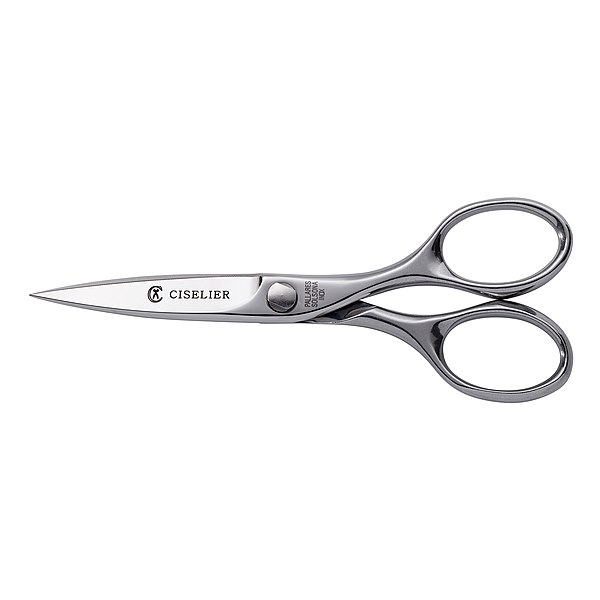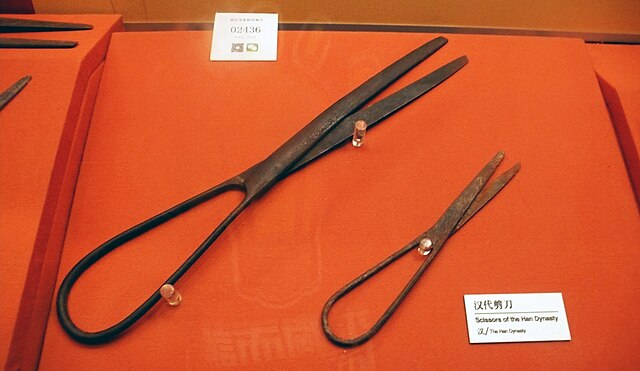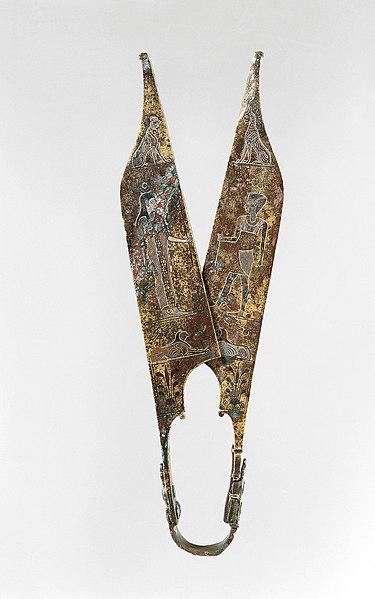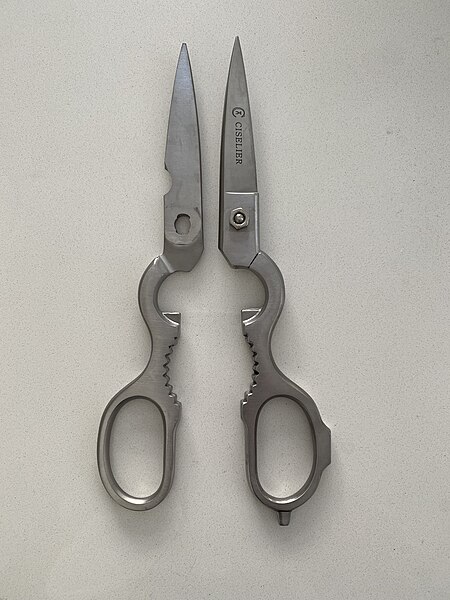A tailor is a person who makes or alters clothing, particularly in men's clothing. The Oxford English Dictionary dates the term to the thirteenth century.
1955 photo of a tailor at work in Wales
Fuliru tailor named Dorcas in Democratic Republic of Congo
Master Tailor Agne Wideheim (1918–2007), Sweden, in the tailor's posture
A bespoke suit requires a “skeleton fitting” in which the garment is only partially made in order to correct minor deficiencies in fit
Scissors are hand-operated shearing tools. A pair of scissors consists of a pair of blades pivoted so that the sharpened edges slide against each other when the handles (bows) opposite to the pivot are closed. Scissors are used for cutting various thin materials, such as paper, cardboard, metal foil, cloth, rope, and wire. A large variety of scissors and shears all exist for specialized purposes. Hair-cutting shears and kitchen shears are functionally equivalent to scissors, but the larger implements tend to be called shears. Hair-cutting shears have specific blade angles ideal for cutting hair. Using the incorrect type of scissors to cut hair will result in increased damage or split ends, or both, by breaking the hair. Kitchen shears, also known as kitchen scissors, are intended for cutting and trimming foods such as meats.
A pair of standard scissors
Han dynasty scissors
These shears are thought to date to the 2nd century AD and come from a Roman settlement in Trabzon, Turkey. The style of the "Egyptianizing" metal inlay designs suggests that they were made to imitate actual Egyptian art. When closed, the dog and cat figures at the tips come face to face.
Classic Italian-style kitchen scissors, often used to cut food. The two halves can be detached in order to be cleaned.








